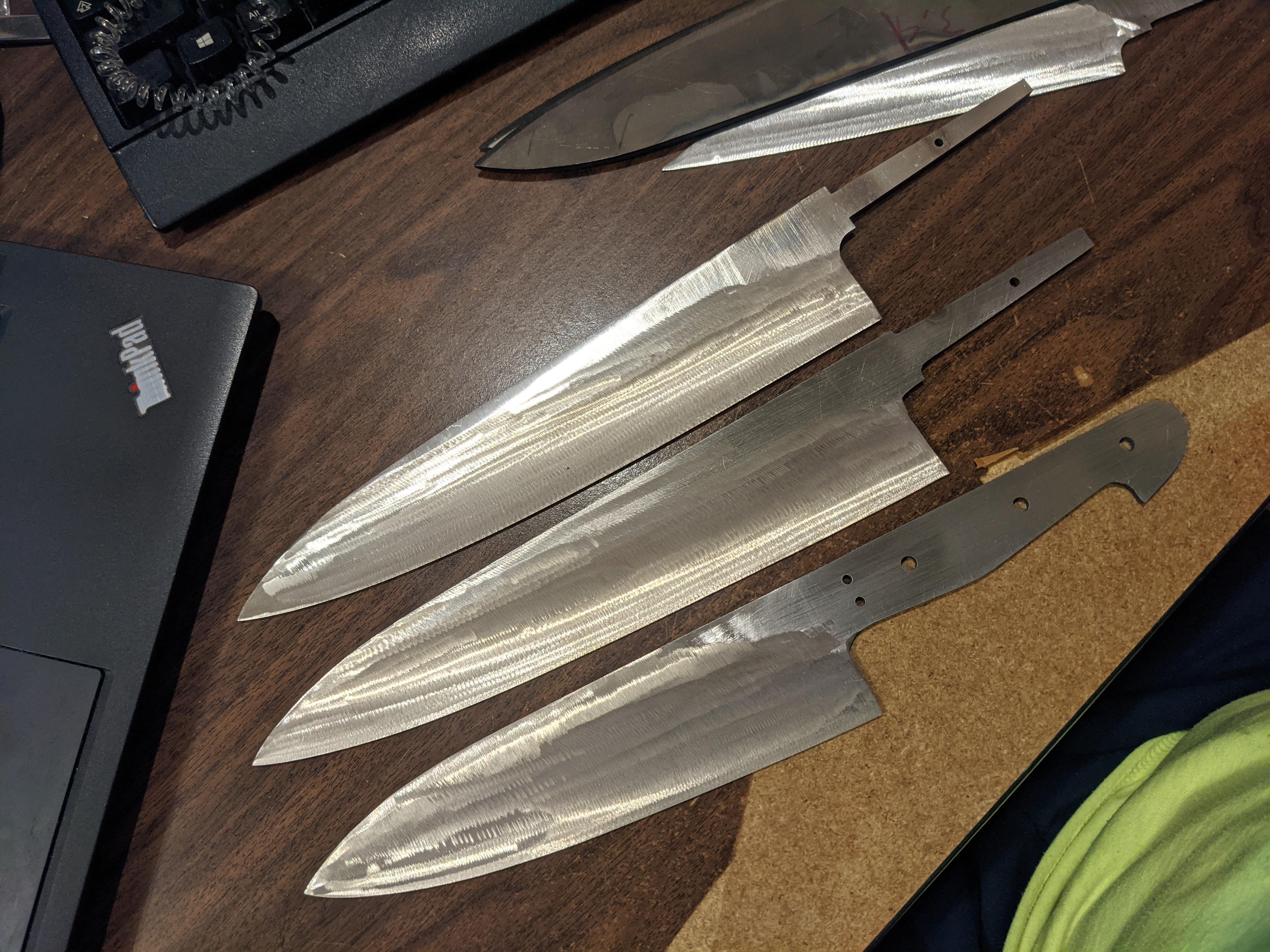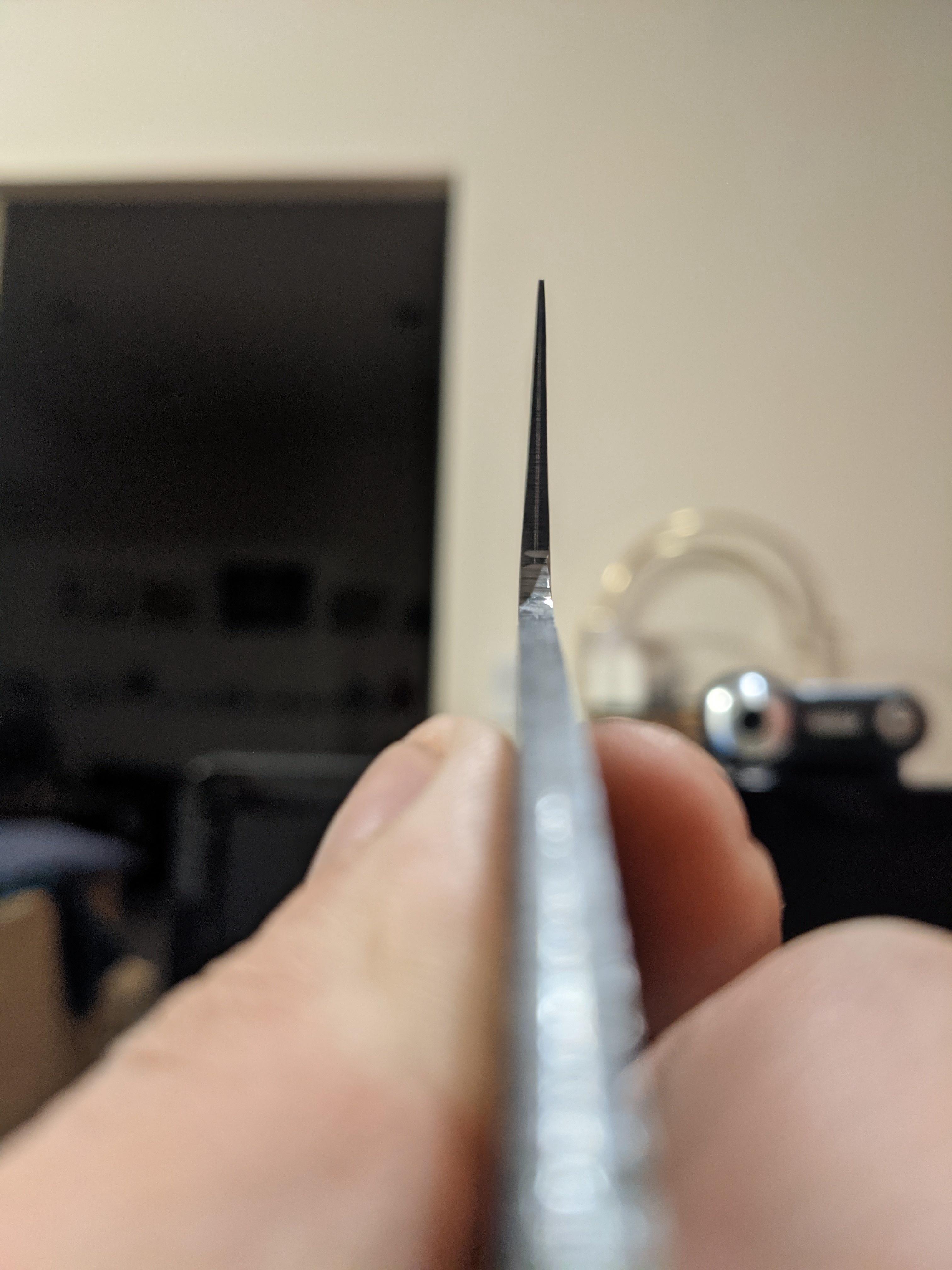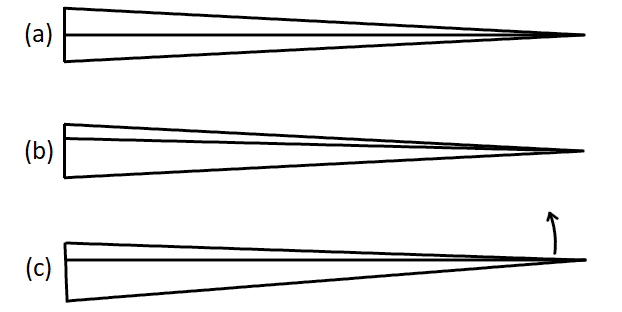kennyc
Well-Known Member
Working on a few with asymetric grind (partly because I don't really have any yet but mostly because not having to match both sides seems easier)
The actual grind is intended to be straighter on the left side (right-handed user) when perpendicular to the board so the edge at the heel - by nature of this type of asymetry will be offset from the centerline of the knife.
What about the tip? Should it be in-line with the edge at the heel (and therefore offset from the centerline of the handle)? or in-line with the handle (and therefore not parallel with the spine when viewed from above?
How do the more extreme examples (kiritsuke/deba/yanagiba) deal with this?
the WIPs:

current choil shot:

The actual grind is intended to be straighter on the left side (right-handed user) when perpendicular to the board so the edge at the heel - by nature of this type of asymetry will be offset from the centerline of the knife.
What about the tip? Should it be in-line with the edge at the heel (and therefore offset from the centerline of the handle)? or in-line with the handle (and therefore not parallel with the spine when viewed from above?
How do the more extreme examples (kiritsuke/deba/yanagiba) deal with this?
the WIPs:

current choil shot:







